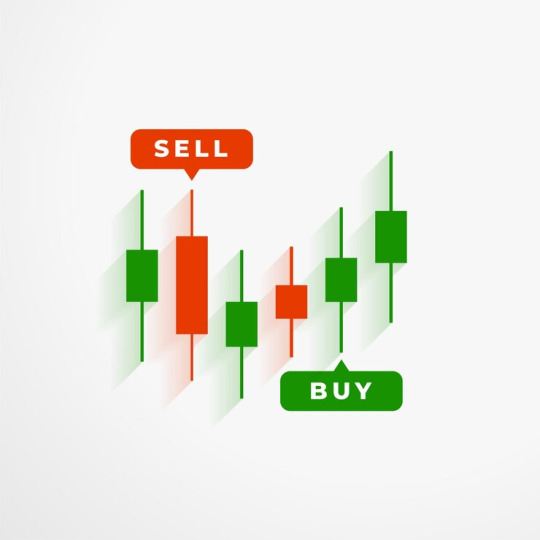Text
Earnings Per Share: Definition And How To Calculate It?
What Is Earnings Per Share (EPS)?
In simpler terms, earnings per share is calculated by taking the net income of a company and dividing it by the total number of its available common stock shares. It serves as an indicator of the company’s financial health.
However, businesses will show an adjusted EPS to account for one-time events or potential share dilution. When the company has higher EPS, it means that they receive great profit.
3 Types of Earnings Per Share (EPS)
Trailing EPS
Trailing type is calculated based on the earnings from the last four quarters, making it a reliable figure based on real data. Most price-to-earnings (P/E) ratios use this type because it is based on actual results. However, some investors view this type as outdated and also look at current and future EPS numbers.
Current EPS
Current type is calculated based on data from the entire current year. This includes data from past quarters and the upcoming ones.
Forward EPS
Forward type is calculated based on earnings forecasts for the next year, which could be from the company or experts. Investors often weigh these predictions against real one from the latest quarter to influence stock prices.
How to Calculate Earnings Per Share (EPS)
Earnings Per Share is calculated by distributing a company’s net income after it pays all bills and costs, and it is the sum available to shareholders.
The Formula for Calculating Earnings Per Share
The formula uses an average number of shares because the exact number can change during the year. Companies might buy or sell shares, so the average helps us get a clearer idea of how much money each share makes.
EPS = NI – PD / AOCS
** NI = Net Income
PD = Preferred Dividends
AOCS = Average Outstanding Common Shares
Find more information: https://finxpdx.com/earnings-per-share-definition-and-how-to-calculate-it/
0 notes
Text
What Is Margin Trading?
In the investing world, margin trading is a double-edged sword, offering gains and increased risks by allowing investors to borrow funds from a broker and boost investment capabilities. However, this comes with the caveat that a downward turn in your assets could not only erase your initial investment but also leave you in debt to the broker.
What Is Margin Trading?
Buying on margin, also known as margin trading. It boosts your ability to make larger investments than you could with just your money. However, it’s crucial to remember that leveraging borrowed money increases your risk of bigger losses. When you open a new brokerage account, you usually have the option to set up a margin account for this purpose.
Margin trading amplifies your buying power, allowing you to invest in more assets than you could with just your own funds.
Margin accounts offer flexible repayment terms, freeing you from fixed schedules as long as you meet the broker’s maintenance margin.
Forced liquidation is a risk if you can’t meet a margin call, potentially resulting in significant financial loss.
Interest costs are an unavoidable aspect of margin trading.
Working Principles of Margin Trading
The Federal Reserve, FINRA, and the SEC all strictly watch margin trading activities. While individual brokers have their own set of rules, there are standard guidelines that generally apply to all margin trading.
Minimum Margin
This refers to the lowest amount you must deposit to begin. The requirement is either $2,000 or the entire cost of the securities you wish to purchase, whichever is lower. Some brokers may have higher requirements.
Initial Margin
This refers to the portion of the asset’s purchase price that comes from your own pocket when you engage in trading. Under the Federal Reserve’s Regulation T, you can borrow up to 50% of the initial cost of stocks, although some brokers may set a higher threshold.
Maintenance Margin
This refers to the minimum balance you must maintain in your margin account once you own securities on margin. The general requirement is at least 25%, but it can go up to 40%, depending on the broker’s policy. This principle aims to prevent investors from sinking too deep into debt.
Benefits of Margin Trading
Leverage
Leverage is the main advantage of trading on margin. It amplifies your buying capacity. In a standard cash account, you’re limited to purchasing assets only if you have the funds to cover the entire cost. However, margin trading lets you acquire more assets than you could with just your own cash.
Flexibility
Margin accounts stand out from other loans because they don’t have fixed repayment schedules. You can pay back the loan whenever you sell the stock, provided you meet the broker’s maintenance margin requirements.
Magnifies Profits
Trading on margin can significantly boost your earnings. This is possible because as the value of your securities goes up, not only do your assets increase in worth, but their rising value also gives you additional leverage for future margin trades.
Learn more: https://finxpdx.com/margin-trading-good-way-to-amplifies-your-buying/
0 notes
Text
What Is ETF?
ETFs are a compelling investment tool suitable for investors of various portfolio sizes. It has become increasingly popular among investors seeking to diversify their investments without the burden of active management.
What Is an ETF?
An ETF (Exchange-Traded Fund) is similar to a mutual fund, pooling investments to track a particular index, industry, or even a range of assets. What sets it apart is its ability to be traded on stock exchanges like individual stocks.
Exchange-traded funds can be as specific or as broad as you like, from tracking a single commodity’s price to a diverse array of assets. The SPDR S&P 500 ETF, commonly known as SPY, pioneered in this space and continues to be a hot ticket item today.
ETFs are suitable for both novice and expert investors, offering a range of types to fit various investment goals.
Exchange-traded funds often hold multiple assets, reducing the risk associated with investing in individual stocks or bonds.
ETFs are structured to minimize capital gains taxes, making them a tax-efficient investment option.
8 Type of ETFs
1. Leveraged ETF
Focusing on amplifying returns, Leveraged ETFs utilize financial derivatives like options or futures to aim for two to three times the gains. These are tailored for investors keen on capitalizing on short-term market movements and “inverted compounded returns.”
2. Commodity ETF
Focusing on raw materials like oil and gold, Commodity ETFs serve as a cost-effective diversification tool, eliminating the need for storage and insurance.
3. Bond ETF
Focusing on providing a consistent income stream, Bond ETFs link their returns to the performance of underlying bonds. Unlike individual bonds, these ETFs have no set maturity date and trade at variable prices.
4. Industry/Sector ETF
Focusing on specific industries such as technology or healthcare, Industry/Sector ETFs allow investors to benefit from the growth trends in those sectors while mitigating the risks of individual stock volatility.
5. Passive and Active ETF
Focusing on either broad indices or specialized sectors, Passive and Active ETFs offer a more budget-friendly and less risky investment option.
6. Currency ETF
Focusing on a variety of domestic and international currency pairs, Currency ETFs are useful for those looking to speculate on currency values or as a hedging tool for businesses involved in international trade.
7. Inverse ETF
Focusing on profiting from market or sector declines, Inverse ETFs employ shorting strategies and are often set up as exchange-traded notes, which come with their own set of risks.
8. Stock ETF
Focusing on offering a comprehensive view of specific industries or sectors, Stock ETFs act like a collection of stocks and are generally more cost-effective than purchasing individual stock
Find more information: Finxpdx

0 notes
Text
What Is FPO?
FPO or follow-on public offering, is a term frequently encountered in financial processes, particularly when discussing stock market strategies. An FPO allows a publicly listed company to issue additional shares to strengthen its equity capital.
Unlike an IPO (initial public offering), which marks a company’s debut in the public market, an FPO is undertaken by companies already public and trading on a stock exchange. This method is an effective capital-raising strategy, enabling these firms to expand their financial resources. An FPO represents a secondary offering, distinct from an IPO, for companies seeking further investment influx by issuing new stocks in the financial market.
FPO full form( Follow-on Public Offering) is a method used by publicly traded companies to raise additional capital by issuing more shares.
FPO can be categorized primarily into two types: rights issues and public issues, each with its own set of rules and advantages.
Companies initiate FPO to raise capital for specific needs like business expansion or debt reduction.
While IPOs are for companies going public for the first time, FPOs are for already publicly-traded companies looking to issue additional shares.
How Does FPO Work?
A follow-on public offering (FPO) is a refined financial tool designed for companies already trading in the public market. It’s a strategic move used to secure additional capital. Typically, the need for an FPO arises when a company identifies a significant requirement for more funds, which could be for various reasons. These reasons include reducing debt levels to improve financial stability, financing major business expansions, supporting new projects, or seizing new market opportunities requiring substantial investment.
5 Benefits of Using FPO
1. Capital for Expansion or Debt Reduction
2. Shareholder Loyalty
3. Market Confidence
4. Liquidity
5. Diversification
Learn more: Finxpdx
0 notes
Text
What Is Nasdaq?
If you’re tuned into financial news or planning for retirement, you’ve likely heard of Nasdaq. It’s the world’s second-largest stock market, just behind the NYSE.
This stock market is popular for tech-related businesses like Apple, Amazon, and Microsoft. It is unique for its online trading, facilitated through an efficient computer system, fulfilling its digital-first vision from inception
Nasdaq performance is outstanding and is also a host for big companies like Starbucks and Tesla. Since it targets high-growth companies, stocks here tend to be more volatile. The market trades both listed and OTC stocks, identifiable by 4-5 letter codes. It has pioneered several firsts, like online trading and cloud-based data storage.
How the Nasdaq Works
The Nasdaq started as a way to get instant stock quotes and focused on over-the-counter (OTC) trading from the beginning. It added automated trading systems that give real-time info on how many shares are being traded. This exchange was one of the first to offer online trading.
If you want to buy or sell on this stock market, you have to go through dealers, who are sometimes called “market makers.” to complete the trades.
Nasdaq Trading Hours
The Nasdaq operates from 9:30 a.m. to 4:00 p.m. However, it also offers extended trading hours, with “pre-market” sessions from 4 a.m. to 9:30 a.m. and “post-market” sessions from 4 p.m. to 8 p.m.
How to Invest In the Nasdaq
Set Your Financial Goals
Research the Market
Choose a Trading Platform
Understand the Basics of Trading
Learn more about Nasdaq: here

0 notes
Text
Learn advanced tools for forex trading with 'Candlestick Pattern'
Candlestick charts are widely used in forex trading as a tool for technical analysis. They provide a visual representation of price movements over a specified period, showing the opening, closing, high, and low prices. Each candlestick typically consists of:
Body: The rectangular part, which shows the difference between the opening and closing prices.
Wicks (or Shadows): The thin lines above and below the body, indicating the highest and lowest prices during the period.
Top Powerful Candlestick Patterns
1. Hammer: This happens when sellers bring the price down, but strong buying forces push it back up to close almost where it started.
2. Bullish Engulfing Bar: It starts with a smaller candle showing a drop in price, followed by a bigger candle that fully covers the first one from its opening to closing prices.
3. Piercing Pattern: It has two candles: the first one shows a drop in prices and is followed by one that starts even lower but goes up past the middle of the first candle.
4. Three White Soldiers: The three white soldiers is a pattern of three long candles going up in price, often seen as a strong clue that a downward trend could be flipping.
5. Three Inside Up: The three inside up is a pattern of three candles that often hints at prices moving up.
6. White Marubozu: The White Marubozu is a single candle pattern that’s seen as a strong hint that prices will keep going up.
7. Bullish Harami: The Bullish Harami is a two-candle pattern that might signal a change from a falling market to a rising one.
8. Inverted Hammer: The inverted hammer is a single-candle pattern that often shows up when a market is going down but could be about to go up.
9. Tweezer Bottom: The tweezer bottom is a pattern you might see when the market is going down but could be getting ready to go up.
10. Three Outside Up: The three outside up is a pattern that suggests the market might be about to go up.
Learn more about other top 35 candlestick pattern: https://finxpdx.com/35-powerful-candlestick-patterns-pdf-download/

0 notes
Text
What Is a Gold ETF?
What Is a Gold ETF?
Gold ETF, standing for Gold Exchange-Traded Fund, is a revolutionary investment vehicle that offers the best of both worlds: the security of investing in gold and the convenience of stock trading. Unlike traditional methods, where one has to deal with the physical handling of gold bars or coins, a gold ETF investment allows you to invest in gold electronically.
It’s essentially a fund traded on the stock market, just like individual stocks. However, instead of owning a slice of a company, each share of a gold ETF investment represents ownership in a certain amount of gold bullion.
Benefits of Gold ETF
1. Liquidity
It offers one of the biggest advantages in terms of liquidity. They can be traded just like any other stock on the stock exchange, making buying and selling straightforward.
2. Cost-Effective
It helps you sidestep the costs associated with storing physical gold. This includes insurance and locker charges, which are often minimal or non-existent when you make an investment.
3. Tax Benefits
It generally has a lower capital gains tax compared to physical gold. This tax efficiency adds to their attractiveness as an investment option.
4. Portfolio Diversification
It offers excellent portfolio diversification. They are a great hedge against market volatility, helping to balance out risks in your investment portfolio.
5. Convenience
Its investment simplifies the investment process. From purchasing to storing, you don’t have to worry about issues like purity or safe storage; it’s all taken care of for you.
How a Gold ETF Works
This investment option is investment funds traded on stock exchanges, similar to individual stocks. They are designed to replicate the price movements of physical gold. Managed by professional asset managers, these funds ensure real-time tracking of gold prices.
You can buy or sell shares of a gold ETF during standard trading hours, just like you would with any other publicly-traded stock. This setup provides an accessible and straightforward way to invest in gold without dealing with the complexities of owning physical gold.
Source: Finxpdx

0 notes
Text
In financial trading, various strategies and types of orders, such as limit orders, buy limit orders, and sell limit orders, are frequently used. However, one strategic approach that stands out for managing substantial volumes is the iceberg order.
An iceberg order is a strategic type of order used by institutional investors to manage large transactions privately within the market’s order book. Resembling an actual iceberg where the vast majority is hidden beneath the surface, this order type conceals the real volume of the transaction. It displays only small segments similar to a limit order.
This strategy begins by dividing the larger order into multiple smaller ones, typically seen as buy-limit orders or sell-limit orders, depending on the market direction.
Iceberg orders significantly affect traders by changing how large stock orders are handled quietly within the market. These orders allow big investors to make large trades without causing significant changes in stock prices, which could harm the market and their trading results.
0 notes
Text
Understanding Oscillators: How They Work and Why They Matter
The ability to quickly assess market changes is a necessity in trading. As an essential component of technical analysis, oscillators give traders important data about the direction of the market and possible turning moments. These tools are especially helpful in identifying situations in which assets are overvalued or oversold.
What Is Oscillator?
An oscillator is a trading tool for determining the momentum of price changes and spotting possible turning points in the market. It shows when a stock or other asset might be bought or sold in large quantities. The oscillator can indicate signs that the price could soon change direction.
An oscillator is a technical analysis tool that measures the momentum of price movements. It helps traders identify potential market reversals by indicating overbought or oversold conditions.
Oscillators track the speed and direction of price movements by analyzing price data over a set period and displaying this data graphically, aiding traders in visualizing market momentum.
There are several types of oscillators, each with unique features and uses. Those include the relative strength index (RSI), stochastic oscillator, and moving average convergence divergence (MACD).
Oscillators help traders refine trading strategies by providing timely buy or sell signals based on identified market conditions, thus enhancing their decision-making process and potential profitability.
Oscillators also have limitations, such as the potential to generate false signals during strong trending markets.
The oscillator’s fundamental role is to gauge market conditions by measuring the speed of price changes. It achieves this by comparing the current price to a price from a previous period, with the primary objective of interpreting the force behind price movements.
Learn more about Oscillators: https://finxpdx.com/oscillator-gain-a-competitive-edge-in-trading-with-it/
0 notes
Text
Explore Forex Factory: The Ultimate Resource for Forex Traders
If you're the one who seeking for the successful of trading, especially forex market, let's find out the valuable tool that will help you estimate your trading goal.
Forex Factory is a complete online platform that provides essential tools and resources for forex traders of all levels.
Forex Factory offers broad market data, for instance, present quotes and charts, crucial to market analysis.
Utilizing the Forex Factory calendar can significantly enhance trading strategies by timing the market with economic events.
Forex Factory is famous as a trusty and up-to-date source of financial information.
Learn more details: https://finxpdx.com/forex-factory-the-ultimate-resource-for-forex-traders/
0 notes
Text
youtube
Navigating the complexities of forex trading can sometimes feel complicated. Whether you’re a novice or a seasoned trader, the ever-changing landscape of the foreign exchange market can present challenges
Forex trading involves swapping currencies on the foreign exchange market, like the Euro and the U.S. Dollar. Each currency pair has two prices, the BID and the ASK. The BID is what the broker is willing to pay to buy the currency from you, while the ASK is the price you’re willing to sell it for.
If you want to learn more about forex trading, please visit Finxpdx.com
1 note
·
View note